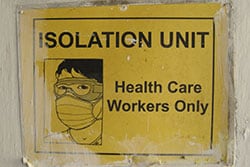Prevention

In areas where Nipah virus (NiV) outbreaks have occurred (Bangladesh, Malaysia, India, and Singapore), people should:
- Practice handwashing regularly with soap and water
- Avoid contact with sick bats or pigs
- Avoid areas where bats are known to roost
- Avoid eating or drinking products that could be contaminated by bats, such as raw date palm sap, raw fruit, or fruit that is found on the ground
- Avoid contact with the blood or body fluids of any person known to be infected with NiV
Because NiV can be spread from person-to-person, standard infection control practices and proper barrier nursing techniques are important in preventing hospital-acquired infections (nosocomial transmission) in settings where a patient has confirmed or suspected NiV infection.
Other geographic locations may be at risk for NiV outbreaks in the future, such as regions where flying foxes (bat genus Pteropus) live. These bats are currently found in Cambodia, Indonesia, Madagascar, the Philippines, and Thailand. People living in or visiting these areas should consider taking the same precautions as those living in areas where outbreaks have already occurred.
In addition to steps that individuals can take to lower their risk for NiV infection, it will be critical for scientists, researchers, and communities at risk to continue learning about NiV to prevent future outbreaks. Broader prevention efforts include:
- Increasing surveillance of animals and people in areas where NiV is known to exist.
- Increasing research on the ecology of fruit bats to understand where they live and how they spread the virus to other animals and people.
- Evaluation of novel technologies or methods to minimize spread of the virus within bat populations.
- Improving tools to detect the virus early in communities and livestock.
- Reinforcing protocols for healthcare settings on standard infection control practices to prevent person-to-person spread.
- Raising awareness about the signs, symptoms, and risk of NiV among populations at higher risk due to:
- Geographic location
- Contact with fruit bats or items contaminated by fruit bats
- Contact with pigs or animals that could come into contact with fruit bats
- Work in a healthcare setting or as a caregiver for people infected with NiV